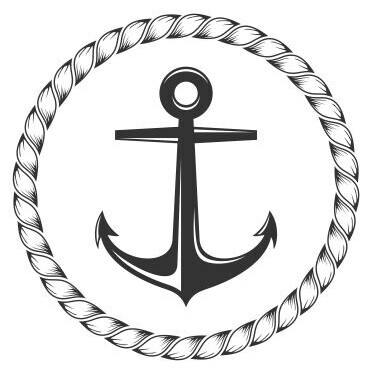Tagged: cable anchor
- This topic has 3 replies, 1 voice, and was last updated 4 years, 12 months ago by
icedcappucino.
-
AuthorPosts
-
02/06/2020 at 20:46 #680
All 3 stoppers and requirements he asked each and everything in stoppers ?
Diagrams – DJ house
Mooring ropes will use a rope stopper, either the ‘common rope stopper’ or the ‘West Country stopper’, depending on the type of lay and the material of manufacture of the mooring ropes in question.
– Same on same except for nylon
– flexible, high melting point and low stretchCommon rope stopper
– only hawser lay
– used for mooring, derrick handling and towingWest country (Chinese) stopper
– hawser or multiplait
– the size of the rope should be as near as possible to 50 per cent breaking strain of the rope
– do not use nylon on nylonChain stopper
– only wires, not ropes
– against the lay else it can unravel02/06/2020 at 20:55 #684BALTIC MOOR
– ports with strong onshore winds
– wind on beam or abaft the beam
– stern WIRE attached with twine in bights to fwd anchor
– secure mooring lines, take weight on anchor and stern wire
– disadvantage is take taken to secure and let go stern wire to anchor
– find lee if necessaryMediterranean moor
– less quay space
– can discharge to barges on both sides
– tankers with stern discharge system
– car carriers with stern doors
– approach parallel to the quay
– transverse thrust effect after letting go second anchor bring aft into quay
– tension on cables will tighten mooringsrunning moor
– have engines
– stem tide
– 4-5 knots
– give kick astern if necessary from second positionstanding moor
– stem current
– with or without engines
– better when strong current
– give kick astern at start
– at second position give kick ahead to reduce weight on windlassopen moor
– NON TIDAL WATER
– stem current
– let go windward
– pay out both to even scope
– let go together
– after let go of second anchor, first anchor can break out of holding ground
– make sure anchors holdsBerthing
1) On shore winds/ Calm tidal conditions – one anchor (similar to Baltic moor but no stern wire in bights)2) Offshore winds/ calm tidal conditions – approach at wide angle/ pass head and stern line from bow area
3) berthing alongside others/ on shore wind/ stbd alongside – stem tide/ approach port side parallel to berthed vessel/ send stbd stern line/ short round turn, transverse thrust/ send head line/ bring alongside
unberthing
1) wind and tide astern – single up/ stern astern till stern clear of quay/let go both lines/ helm and engines
2) offshore winds – single up/ vessel blown clear/ let go lines
3) wind and tide ahead – single up/ ease head line, rudder stbd/ bow paid off/ cast off
02/06/2020 at 21:37 #706What is the difference between snubbing round the cable and dredging the anchor
Snubbing round – tidal stream astern or berthing
– speed reduced
– let go anchor at short stay
– drag anchor along bottom
– cants bow towards anchor side
– use of max helmSnubbing round in emergency
– quick turn if narrow channel obstructed
– hard stbd
– stop engines
– let go anchor
– full astern
– vessel snubbed around
– full ahead on engines
– ease and check cable as weight comes on anchor
– once vessel stopped, half ahead
– heave up as vessel approaches
– safe anchorageDredging down – berthing
– head to wind/tide
– vessel not as fast as current
– makes rudder effective
– crabwise motion
– bold helm -
AuthorPosts
- You must be logged in to reply to this topic.
